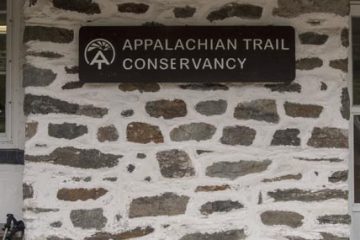The Appalachian Trail hosts the largest number of hikers in the U.S. every year. This means that the natural environment must be carefully preserved by all hikers so that it can retain the features that deliver a spectacular outdoor experience for everyone. Trail conservation will be sustained if you adopt the following “Leave No Trace” principles each time you hike on the A.T.
Table of Contents
Proper Planning
Take time to plan and prepare for your hike so you can minimize your impact on the natural resources on the trail. Study the camping regulations for different parts of the trail. Limit your hiking group to a maximum of 10 members and plan for your own temporary tent and shelters. Take along a trowel for digging holes to burying waste. Bring a rope of 50 feet or more to hang food and scented items from bears and prepare adequately for harsh weather conditions and adopt strategies that will prevent emergencies. This will help to reduce the impact of rescues and searches. You should also avoid the most crowded periods such as March 1st, 15th, or April 1st when thru-hikers begin their journey in Georgia and head towards Maine.
Durable Surfaces for Camping
When hikers trample on vegetation, the land could become bare and lead to soil erosion and an unattractive trail. So it is vital to reduce resource damage by using only existing trails and designated campsites. Use durable surfaces like grass or rocks when you want to take breaks. Walk in the middle of the trail to prevent unnecessary expansion of the existing trail. Take tree branches off the trail instead of bypassing them and creating a new trail.
Efficient Waste Disposal
Do your best to carry out all the litter, food leftovers and trash you create at your campsite. Bring along resealable bags to collect your trash and take it home or dispose of it at a designated location. You should also maintain good sanitation by disposing of wastewater and human waste properly. Use only biodegradable soap and dispose of your dish washing waste water at a distance of 200 feet or more from natural water sources. Use a trowel to dig 8-inch catholes at about 200 feet from from the trails to dispose of human feces.
No Alterations
It is important to leave the plants, natural objects, and artifacts exactly where you find them so other hikers can enjoy them. Allow others to enjoy a true sense of discovery. Avoid digging trenches around your tents. Use only dead wood that is larger than your wrist to make campfires. Leave all the live trees or plants and ensure that you use rubber tips on your trekking poles so they don’t damage the trail. As much as possible check your pants and shoes for non-native seeds so you do not transfer them to a new region.
Environmentally-friendly Campfire
Prevent further degradation of campsites and shelter areas by reducing the use of firewood. Instead, use lightweight camp stoves that create faster fires and don’t require firewood. In place of lighting a campfire every night, use a candle lantern. You should also avoid creating campfires at high elevations or in places where the supply of wood has already being depleted significantly. If you must make a fire, use wood that is truly dead – it will be easy to break with your hands. Burn the wood completely and take away all leftover wood and food.
Preservation of Wildlife
Animals can get upset by loud noises and rapid movements. Keep a distance from wildlife so you don’t alter their behaviour. Avoid following or approaching animals. The population of bears is on the increase at various sections of the trail. Some hikers give bears food and this has made some of them to link humans with food. Also, avoid leaving food droppings in your shelters because they attract mice that will become a menace to other hikers. Make sure you hang up your food and other scented items like toothpaste in a place where bears will not be able to reach them.
Consideration for Other Hikers
Respect other campers and hikers and ensure that they also enjoy their solitude. Keep noise down and don’t bring music players, radios and pets. Let the sounds of nature be heard by other campers. Turn off alarms and don’t use cell phones in a way that will disturb others. If you are hiking with a dog, ask for permission from other hikers before taking it into a shelter. Bury the dog’s waste just like you do to your waste.
Conclusion
Make sure you practice the “Leave No Trace” principle anytime you are hiking on the trail. Remember that it is our collective responsibility to conserve the trail and its surroundings for our present and future generation of hikers.


Leave a Reply